
While cricket has moved ahead with the times, the introduction of technology has only complicated the game.
The Decision Review System, which was first introduced in Test cricket to review doubtful decisions by the on-field umpires in case of a batsman being dismissed, continues to hog the headlines in the ongoing Ashes series between England and Australia, with both teams left stunned by some bizarre decisions by the television umpire despite the use of technology.
The DRS debate erupted yet again on Monday, the fifth and final day of the third Test in Manchester, when England’s first innings centurion Kevin Pietersen was adjudged to have nicked Peter Siddle behind after scoring eight.
Pietersen asked for a review, and despite no 'hotspot visible on the video replay, the third umpire upheld the decision. Television's snicko technology, not used by the officials, suggested the batsman was out.
This, and many decisions during the course of this Ashes series, has left many dumbfounded. They beg the question: How can the third umpire, despite having so much technology at his disposal, commit such silly mistakes?
The DRS uses Hawk-Eye and Hot Spot to review decisions which challenge the original decisions by the on-field umpires. Hawk-Eye is a ball-tracking technology that plots the trajectory of a bowling delivery that has been interrupted by the batsman, often by the pad, and can determine whether it would have hit the wicket or not.
Hot Spot uses the infra-red imaging system which illuminates the spot where the ball has been in contact with bat or pad.
Snickometer, which relies on microphones to detect small sounds when the ball hits the bat, is no longer in use.
DRS was tried for the first time in the Test series between India and Sri Lanka in 2008 before the ICC officially introduced it in 2009 for the Test series between Pakistan and New Zealand.
Each team is allowed to make two unsuccessful reviews per innings in a Test and one in a One-Day International. If the on-field umpire's decision is reversed by the television umpire then the review is deemed successful and it does not count towards the limit.
The on-field umpires also use the technology on their own to consult on run-out, stumping or close catches.
So, following the latest controversy involving Pietersen, let’s take a look at some other dismissals in the ongoing Ashes series that has put the DRS under the scanner.
Was Kevin Pietersen Out/Not out?
Click NEXT for more >>
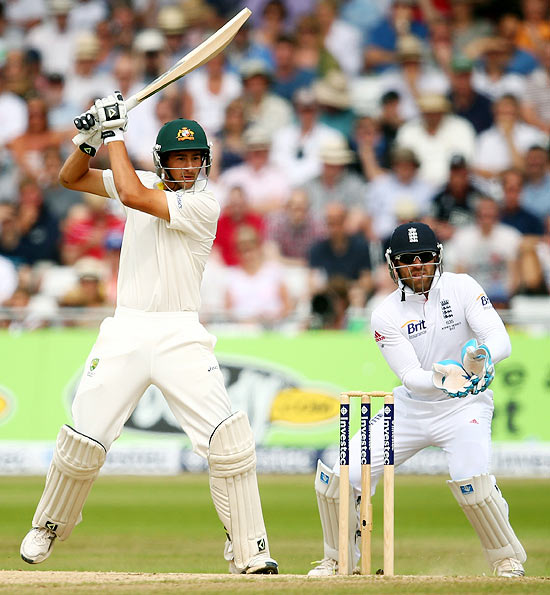
Last-man Ashton Agar was lucky to survive a close call for stumping off Graeme Swann after scoring six, on Day 2 of the first Ashes Test.
Third umpire Marais Erasmus gave the benefit to the batsman and the 19-year-old went on to hit a quickfire 98 on debut to register the highest score by a No. 11 batsman in Tests.
Agar shared a record last-wicket partnership of 163 with Phil Hughes to give Australia a lead of 65 after they had collapsed to 117 for nine.
Was Ashton Agar Out/Not out?
Click NEXT for more >>

Hosts England were left fuming after Erasmus overruled on-field umpire Aleem Dar's original decision and adjudged Jonathan Trott leg before wicket.
Trott was out lbw after the operator of the ‘Hot Spot’ technology failed to analyse the correct delivery. Both captains backed the system and said it had not influenced the result.
The inventor of the Hot Spot thermal imaging replay system later apologised to England for the manner in which Trott was given out by the third umpire on the second day of the first Test at Trent Bridge.
Dar initially gave Trott not out in reply to Australia's lbw appeal. Australia challenged his decision and South African third umpire Erasmus overturned Dar's original verdict despite the fact the side on Hot Spot image of the dismissal, which might have confirmed whether Trott had in fact edged the ball first, was not available.
Dar seemed bewildered when told he had to give Trott out and the batsman himself was aghast.
Later, 'Snickometer', which is not part of the official review system, revealed a thin edge.
Neither this nor the square leg Hot Spot angle were available to Erasmus who was able to view only shots picked up from behind the bowler's arm, which showed no mark on the bat.
Was Jonathan Trott Out/Not out?
Click NEXT for more >>

Stuart Broad sparked a heated debate by standing his ground after he clearly edged a ball from Australia's Ashton Agar and was caught by captain Michael Clarke at slip, although umpire Aleem Dar failed to spot the nick and adjudged him not out.
The tourists, who had used up their two referrals, were left fuming. Broad made most of the reprieve as he and Ian Bell shared an unbroken century partnership to guide England out of trouble.
Later, former West Indies bowler Michael Holding asked the ICC to ban Broad for his refusal to walk.
Slamming Broad for trampling over the spirit of cricket, the Caribbean legend said he believes that Broad's crime is the same as that of West Indies wicketkeeper Denesh Ramdin, who claimed a catch after the ball had fallen to the ground during the ICC Champions Trophy and was banned by Broad's father Chris Broad, an ICC match referee.
Interestingly, DRS, roundly criticised throughout the seesawing clash over five days, ultimately decided the match in Nottingham when the technology picked up a nick from wicketkeeper Brad Haddin that umpire Dar had failed to detect.
Was Stuart Broad Out/Not out?
Click NEXT for more >>
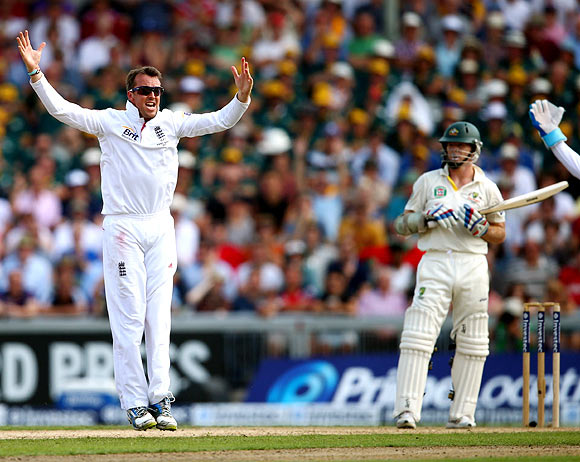
Umpire Erasmus continued his poor showing in the second Test at Lord's, and once again Australia were at the receiving end.
Ed Rogers (15) appeared to lose sight of a Graeme Swann full toss and was also given out lbw. Rogers did not ask for a review only to see that the television replay reveal that the ball, delivered from around the wicket, was travelling across his body and would have missed the leg-stump.
Australia suffered further pain when DRS ruled in favour of Ian Bell, after Steve Smith took a low catch at gully off pacer Ryan Harris.
The on-field umpires decided to consult television umpire Tony Hill after having some doubts over the catch. The decision went in favour of the England batsman despite the footage showing that Smith had got his fingers under the ball to complete a clean catch.
Even Cricket Australia was caught in the DRS storm when a Tweet from their official account condemned the Bell decision, terming it as 'bullshit', although the comment was deleted later. CA later apologised over the offensive message on Twitter, adding that it was investigating the source of the offensive Tweet.
Was Ian Bell Out/Not out?
Click NEXT for more >>
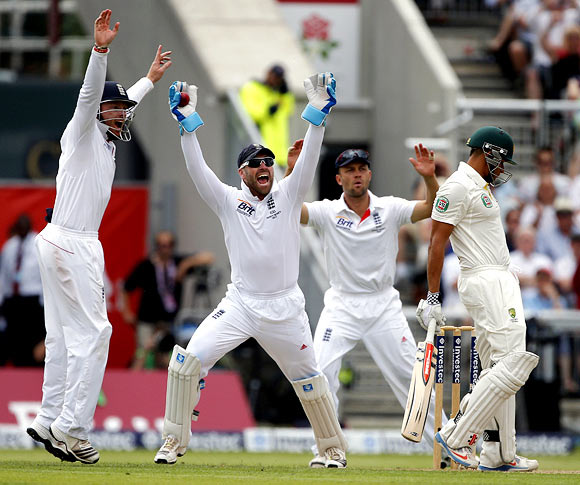
Cricket's decision review system was further dragged through the mire after another controversial decision in the third Ashes Test with the irate Australian board and even Prime Minister Kevin Rudd weighing in.
Usman Khawaja was adjudged by umpire Tony Hill to have edged spinner Graeme Swann to wicketkeeper Matt Prior for one after a vigorous appeal but the batsman asked for the decision to be reviewed following a discussion with non-striker Chris Rogers.
Third umpire Kumar Dharmasena spent a long time checking hot spot and television replays but decided to stick with the on-field umpire's decision despite no convincing evidence of a nick off the bat.
Australia PM Rudd slammed Dharmasena's decision, calling it the worst decision he has ever seen in the sport.
"I've just sat down to watch the Test. That was one of the worst cricket umpiring decisions I have ever seen," he tweeted.
Legendary Australia leg-spinner Shane Warne also made his anger clear: "That's a shocker, that's an absolute shocking decision."
Was Usman Khawaja Out/Not out?
Click NEXT for more >>
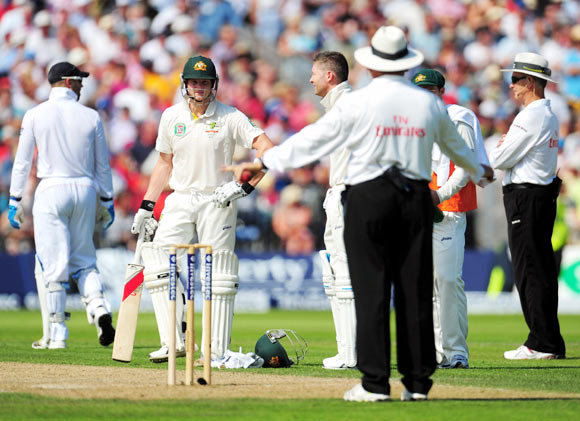
England might have felt hard done when a review against an lbw not-out for Steve Smith stayed with the umpire's call after Hawkeye showed less than half the ball was hitting leg.
It was one of the rare occasions when Australia benefitted from the review system.
England were then sure Smith had edged James Anderson behind but wasted their last review a la Australia this series with no nick detected, which was crucial when Smith was plumb lbw to Stuart Broad but beleaguered New Zealand umpire Tony Hill said not out.
In a rare moment, night-watchman Tim Bresnan did not take the review despite not getting an edge off pacer Peter Siddle on the second day of the third Test.
Strangely, Bresnan, who was sent in at No. 3, preferred to walk off as replays showed the ball missed the edge.
Was Steve Smith Out/Not out?
Click NEXT for more >>
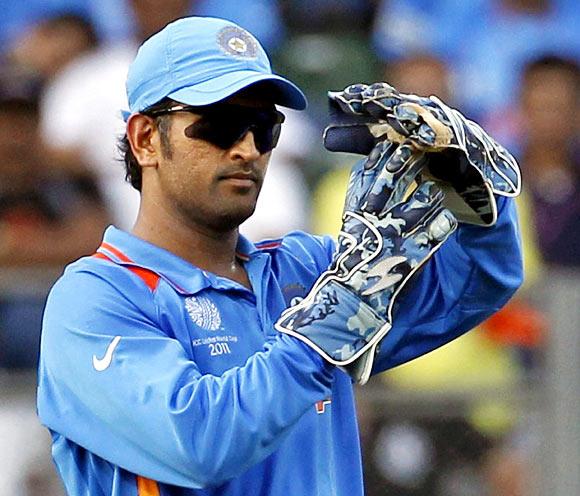
The ICC is keen to get the DRS rid of these basic errors which they believe is more down to human error than technology.
As a first step, the governing body is considering training TV umpires to understand the technology better and also trailing a new system which will provide the officials with more images to enable them to make a better ruling on the reviews.
India refuses to allow DRS because of unhappiness with the accuracy of the technology but the ICC is adamant that the system is helping get more decisions right.
In fact, recent reports have stated that a compromise could well be on the way between the BCCI and ICC on the DRS. India have been offered a compromise solution which involves a few changes in how the system works, and which the ICC hopes will convince them to accept the system.
Should the DRS in its current form continue? Are drastic changes needed for the system to carry on?
Let the ICC know your views.
Should DRS in its current form continue?